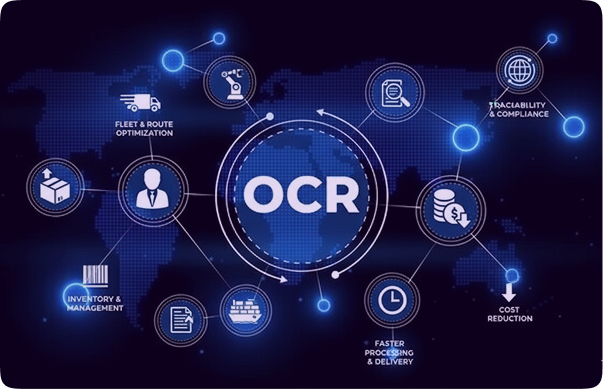Picture a busy warehouse with shipments thrumming, bills gathering on the table, and deadlines ticking away. Every minute that is wasted keying information can result in missed deliveries, annoyed suppliers, and lost profits. Now, imagine all that paperwork just getting automatically sorted, correctly, and almost at once. That is just what OCR technology enables. The benefits of invoice OCR are transforming the logistics industry by turning mountains of documents into actionable data, helping companies move faster and smarter.
What is OCR Technology?
OCR, or Optical Character Recognition, is a technology that translates various forms of documents, such as paper that is scanned, PDF files, or photos, into searchable and editable information. OCR deletes the necessity for manual data entry by recognizing printed or hand scripted words. OCR is particularly indispensable in logistics, whereby paperwork such as bills of lading, invoices, and delivery notes are a continuous flow.

6 Top Benefits of OCR for the Logistics Industry
1. Faster Invoice Processing for Timely Shipments
Time is critical in logistics. OCR technology digitizes the receipt of invoice information, so companies can process bills at a significantly faster pace than manual methods. This prevents shipments from piling up due to paperwork. A freight forwarding organization, for instance, can have their computer automatically read thousands of bills per day, with the information going directly into their computer with the required information. Processing faster eliminates bottlenecks and keeps the supply chain flowing efficiently.
Companies report up to 50% faster invoice processing after implementing OCR, helping shipments stay on schedule.
2. Enhanced Accuracy in Freight and Delivery Details
Mistakes in shipment or delivery data can result in expensive errors, such as incorrect delivery addresses or incorrect shipping amounts. OCR eliminates errors this way by properly extracting crucial information from paperwork. By cross-validating invoice numbers, addresses, and contents, logistics providers can double-check that shipments are properly prepared the first time and avoid expensive rework or returns.
OCR reduces misrouted shipments by 30–40%, lowering costs and improving customer satisfaction.
3. Reduced Operational Costs in Logistics Operations
Data entry is a labor- and time-intensive process, making up a significant portion of the operational cost. Logistics organizations can reduce labor costs with OCR implementation while enhancing efficiency. More strategizing can be done by employees instead of repetitive data entry, thereby directly reducing the cost of operations. A busy warehouse with shipments running thousands a week can reduce paperwork hours to just a minute with OCR-based facilities.
4. Reduced Operational Errors
Even experienced staff make mistakes, particularly with a vast amount of data. OCR technology eliminates human error by mechanically capturing key information. This consistency guarantees properly processed invoices, delivery advice notes, and customs declaration forms every time. Fewer errors translate into fewer arguments with suppliers, fewer delays in shipments, and less financial loss due to mismanaged paperwork
Businesses see a 25%–35% drop in invoices and delivery errors after adopting OCR, minimizing disputes and rework.
5. Strengthening Supplier Relationships
Timely and accurate invoice processing is key to maintaining strong supplier relationships. Suppliers look for their bills to be received without delay or mistakes. OCR assists logistics organizations in complying with such expectations regularly. If suppliers feel that their bills are received efficiently, trust is generated, which facilitates easier business functioning and potential long-term relationships.
6. Streamlining Customs Compliance
International logistics is governed by strict customs requirements, a process that frequently means handling a plethora of paperwork. OCR makes customs compliance easier by rapidly taking information that is relevant to invoices, bills of lading, and certificates of origin. Automatic data capture eliminates manual intervention and guarantees that information that is obligatory is properly filed. This not only accelerates clearance but also eliminates the risk of penalties in the event that paperwork is incorrect.
Conclusion
The benefits of OCR technology in the logistics industry are undeniable. The advantages of OCR technology in the logistics business are transformative. By accelerating billing processing and improving accuracy to lowering expenditures and solidifying supply relationships, OCR simplifies processes across the board. Logistics business organizations that adopt this technology can increase productivity, limit errors, and sustain seamless, punctual supply chain processes. As the business grows, OCR will become a crucial instrument for organizations that aim to remain competitive in a challenging business environment.
Enhancing your workflow through
AI integration is key to future success.
processes and improve efficiency!
I design and refine AI solutions that make workflows smarter and turn data into actionable insights. With expertise in OCR, deep learning, and computer vision, I focus on translating complex concepts into reliable, scalable systems that solve real-world problems and create measurable value.





